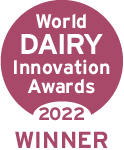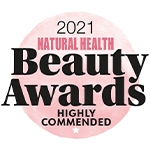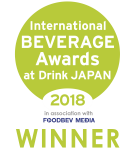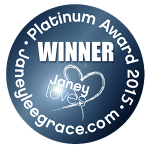The presence of pathogens in the gut can disrupt the normal functioning of the body, leading to infections, inflammation, microbiome imbalance, toxin production, and antibiotic resistance, all of which are known to have negative implications for human health, both in and beyond the gut. Here are five ways gut-residing pathogens can damage your health and wellbeing:
- Disruption of the gut microbiome: Pathogens can disturb the delicate balance of the gut microbiome, reducing the diversity of beneficial bacteria and allowing the overgrowth of harmful microbes. This imbalance can impact digestion, nutrient absorption, and overall gut health.1Kamada N, Chen GY, Inohara N, Núñez G. Control of pathogens and pathobionts by the gut microbiota. Nat Immunol. 2013 Jul;14(7):685-90. doi: 10.1038/ni.2608.2Ohland, C. L., & Jobin, C. (2015). Microbial Activities and Intestinal Homeostasis: A Delicate Balance Between Health and Disease. Cellular and Molecular Gastroenterology and Hepatology, 1(1), 28-40. doi: 10.1016/j.jcmgh.2014.11.004
- Infections: Gut-living pathogens can cause infections in parts of the body far away from the gut, leading to symptoms such as diarrhoea, urinary tract infections, pneumonia, and bloodstream infections. These infections can range from mild to severe, potentially requiring medical intervention.3Ravi A, Halstead FD, Bamford A, Casey A, Thomson NM, van Schaik W, Snelson C, Goulden R, Foster-Nyarko E, Savva GM, Whitehouse T, Pallen MJ, Oppenheim BA. Loss of microbial diversity and pathogen domination of the gut microbiota in critically ill patients. Microb Genom. 2019 Sep;5(9):e000293. doi: 10.1099/mgen.0.000293.4Rolhion N, Chassaing B. When pathogenic bacteria meet the intestinal microbiota. Philos Trans R Soc Lond B Biol Sci. 2016 Nov 5;371(1707):20150504. doi: 10.1098/rstb.2015.0504.
- Inflammation: Pathogens trigger an immune response that can result in chronic inflammation in the gut and other organs. Prolonged inflammation can damage tissues, disrupt normal bodily functions, and contribute to the development of chronic conditions.5Pickard JM, Zeng MY, Caruso R, Núñez G. Gut microbiota: Role in pathogen colonization, immune responses, and inflammatory disease. Immunol Rev. 2017 Sep;279(1):70-89. doi: 10.1111/imr.12567.6Al Bander Z, Nitert MD, Mousa A, Naderpoor N. The Gut Microbiota and Inflammation: An Overview. Int J Environ Res Public Health. 2020 Oct 19;17(20):7618. doi: 10.3390/ijerph17207618.
- Production of Toxins: Some pathogens produce toxins that can directly damage the integrity of the gut barrier tissues. These toxins may cause tissue inflammation, organ damage, or even systemic effects throughout the body, leading to additional health complications.7Fasano A. Toxins and the gut: role in human disease. Gut. 2002 May;50 Suppl 3(Suppl 3):III9-14. doi: 10.1136/gut.50.suppl_3.iii9.8An L, Wirth U, Koch D, Schirren M, Drefs M, Koliogiannis D, Nieß H, Andrassy J, Guba M, Bazhin AV, Werner J, Kühn F. The Role of Gut-Derived Lipopolysaccharides and the Intestinal Barrier in Fatty Liver Diseases. J Gastrointest Surg. 2022 Mar;26(3):671-683. doi: 10.1007/s11605-021-05188-7.9Tulkens J, Vergauwen G, Van Deun J, Geeurickx E, Dhondt B, Lippens L, De Scheerder MA, Miinalainen I, Rappu P, De Geest BG, Vandecasteele K, Laukens D, Vandekerckhove L, Denys H, Vandesompele J, De Wever O, Hendrix A. Increased levels of systemic LPS-positive bacterial extracellular vesicles in patients with intestinal barrier dysfunction. Gut. 2020 Jan;69(1):191-193. doi: 10.1136/gutjnl-2018-317726.
- Antibiotic Resistance: Pathogens have the potential to form biofilms that develop resistance to antibiotics, making it difficult to treat infections effectively. This can limit treatment options and increase the risk of severe or recurring infections.10Paul D, Das B. Gut microbiome in the emergence of antibiotic-resistant bacterial pathogens. Prog Mol Biol Transl Sci. 2022;192(1):1-31. doi: 10.1016/bs.pmbts.2022.07.009.11Wheatley, R. M., Caballero, J. D., van der Schalk, T. E., De Winter, F. H. R., Shaw, L. P., Kapel, N., Craig MacLean, R. (2022). Gut to lung translocation and antibiotic mediated selection shape the dynamics of Pseudomonas aeruginosa in an ICU patient. Nat Commun, 13(1), 6523. doi: 10.1038/s41467-022-34101-212Ramirez J, Guarner F, Bustos Fernandez L, Maruy A, Sdepanian VL, Cohen H. Antibiotics as Major Disruptors of Gut Microbiota. Front Cell Infect Microbiol. 2020 Nov 24;10:572912. doi: 10.3389/fcimb.2020.572912.13Patkowski, J. B., Dahlberg, T., Amin, H., Gahlot, D. K., Vijayrajratnam, S., Vogel, J. P., . . . Costa, T. R. D. (2023). The F-pilus biomechanical adaptability accelerates conjugative dissemination of antimicrobial resistance and biofilm formation. Nat Commun, 14(1), 1879. doi: 10.1038/s41467-023-37600-y
Where to find the pathogen score in the Chuckling Goat Gut Microbiome Test
For all the reasons explained above, the Chuckling Goat Gut Microbiome Test features a combined score that takes into account the levels of 14 different well-researched pathogenic bacteria. You will find your pathogen score in the “Pathogens” report in your Chuckling Goat Gut Microbiome Test results. You will also find the individual scores for each of the pathogens in this report, including Citrobacter, Campylobacter, Clostridioides, Eggerthella, Enterobacter, Escherichia-Shigella, Enterococcus, Fusobacterium, Pseudomonas, Salmonella, Sphingomonas, Staphylococcus, Vibrio, and Yersinia.
Guidance on how to work with your pathogen score – as well as with any pathogen that might be in your sample – will be featured in your Personal Action Plan. Please note that this information is not intended to be a substitute for professional medical advice, diagnosis, or treatment. Always seek the advice of your GP or another qualified health provider if you have any questions about any of the pathogens in your report.
Synonyms: Pathogens, pathogenic bacteria, disease-carrying bacteria
Important disclaimer
The Chuckling Goat Gut Microbiome Handbook is an educational resource built to translate complex science into plain English. The information provided on this page is not intended to be a substitute for professional medical advice, diagnosis, or treatment. Always seek the advice of your GP or other qualified health provider with any questions you may have regarding a medical condition. Always check with your GP for interactions with medications/health conditions before changing your diet or starting to take food supplements.
References
- 1Kamada N, Chen GY, Inohara N, Núñez G. Control of pathogens and pathobionts by the gut microbiota. Nat Immunol. 2013 Jul;14(7):685-90. doi: 10.1038/ni.2608.
- 2Ohland, C. L., & Jobin, C. (2015). Microbial Activities and Intestinal Homeostasis: A Delicate Balance Between Health and Disease. Cellular and Molecular Gastroenterology and Hepatology, 1(1), 28-40. doi: 10.1016/j.jcmgh.2014.11.004
- 3Ravi A, Halstead FD, Bamford A, Casey A, Thomson NM, van Schaik W, Snelson C, Goulden R, Foster-Nyarko E, Savva GM, Whitehouse T, Pallen MJ, Oppenheim BA. Loss of microbial diversity and pathogen domination of the gut microbiota in critically ill patients. Microb Genom. 2019 Sep;5(9):e000293. doi: 10.1099/mgen.0.000293.
- 4Rolhion N, Chassaing B. When pathogenic bacteria meet the intestinal microbiota. Philos Trans R Soc Lond B Biol Sci. 2016 Nov 5;371(1707):20150504. doi: 10.1098/rstb.2015.0504.
- 5Pickard JM, Zeng MY, Caruso R, Núñez G. Gut microbiota: Role in pathogen colonization, immune responses, and inflammatory disease. Immunol Rev. 2017 Sep;279(1):70-89. doi: 10.1111/imr.12567.
- 6Al Bander Z, Nitert MD, Mousa A, Naderpoor N. The Gut Microbiota and Inflammation: An Overview. Int J Environ Res Public Health. 2020 Oct 19;17(20):7618. doi: 10.3390/ijerph17207618.
- 7Fasano A. Toxins and the gut: role in human disease. Gut. 2002 May;50 Suppl 3(Suppl 3):III9-14. doi: 10.1136/gut.50.suppl_3.iii9.
- 8An L, Wirth U, Koch D, Schirren M, Drefs M, Koliogiannis D, Nieß H, Andrassy J, Guba M, Bazhin AV, Werner J, Kühn F. The Role of Gut-Derived Lipopolysaccharides and the Intestinal Barrier in Fatty Liver Diseases. J Gastrointest Surg. 2022 Mar;26(3):671-683. doi: 10.1007/s11605-021-05188-7.
- 9Tulkens J, Vergauwen G, Van Deun J, Geeurickx E, Dhondt B, Lippens L, De Scheerder MA, Miinalainen I, Rappu P, De Geest BG, Vandecasteele K, Laukens D, Vandekerckhove L, Denys H, Vandesompele J, De Wever O, Hendrix A. Increased levels of systemic LPS-positive bacterial extracellular vesicles in patients with intestinal barrier dysfunction. Gut. 2020 Jan;69(1):191-193. doi: 10.1136/gutjnl-2018-317726.
- 10Paul D, Das B. Gut microbiome in the emergence of antibiotic-resistant bacterial pathogens. Prog Mol Biol Transl Sci. 2022;192(1):1-31. doi: 10.1016/bs.pmbts.2022.07.009.
- 11Wheatley, R. M., Caballero, J. D., van der Schalk, T. E., De Winter, F. H. R., Shaw, L. P., Kapel, N., Craig MacLean, R. (2022). Gut to lung translocation and antibiotic mediated selection shape the dynamics of Pseudomonas aeruginosa in an ICU patient. Nat Commun, 13(1), 6523. doi: 10.1038/s41467-022-34101-2
- 12Ramirez J, Guarner F, Bustos Fernandez L, Maruy A, Sdepanian VL, Cohen H. Antibiotics as Major Disruptors of Gut Microbiota. Front Cell Infect Microbiol. 2020 Nov 24;10:572912. doi: 10.3389/fcimb.2020.572912.
- 13Patkowski, J. B., Dahlberg, T., Amin, H., Gahlot, D. K., Vijayrajratnam, S., Vogel, J. P., . . . Costa, T. R. D. (2023). The F-pilus biomechanical adaptability accelerates conjugative dissemination of antimicrobial resistance and biofilm formation. Nat Commun, 14(1), 1879. doi: 10.1038/s41467-023-37600-y













